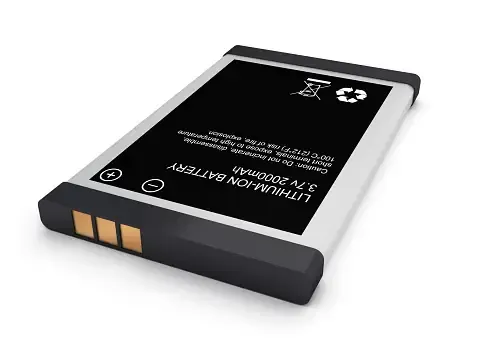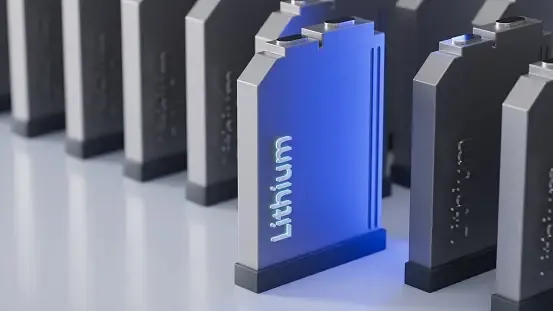
Lithium Ion Battery vs Dry Cell Battery
Lithium ion and dry cell batteries have emerged as close competitors in the self-power generating system industry. Each battery has its own list of differentiations, pros and cons. Thus creating a confusion for potential buyers to make an accurate choice.
That is why we have formed this unbiased analysis of lithium ion batteries vs. dry cell batteries: to help you gain all the crucial information and decide accordingly.
Without any further discussions, let's begin.
What are the dry cell batteries?
Dry cell batteries are one of the earliest forms of batteries invented. Made up of zinc ions and carbon, these also contain electrochemical cells in the past form for enhanced leakage resistance.
Dry cell batteries are well-suited for portable devices due to the presence of carbon rod cathode and electrolyte ammonium.
Some common uses include flashlights, inside remote controls, etc. Nevertheless, these can deplete over time without providing the user with a recharging facility.
What are the lithium ion batteries?
Lithium ion batteries are rechargeable batteries with electrolytes as their base compound. They have higher energy density and longer lifespans than dry cell batteries.
This quality establishes lithium ion batteries as an ideal option for rechargeable devices like mobile phones, laptops, inverters, solar batteries, etc.
Characteristics of dry cell batteries
1.Chemical structure: Dry cell batteries consist of paste and liquid electrolytes. Different types of dry cell batteries include zinc-carbon batteries and alkaline batteries.
2.Shelf life: The dry cell batteries usually have a shelf life of 11 months to 2 years. Nevertheless, multiple factors, such as usage density and quality, determine the exact shelf life.
3.Capacity: The dry cell batteries' voltage is around 1.5 volts. Depending on the type, they have multiple capacities.
4.Maintenance: Dry cell batteries do not need maintenance. Unlike rechargeable batteries, they do not need to be topped up or provided with a constant power supply to keep them functioning. They have a predetermined lifetime, after which they die.
Characteristics of lithium ion batteries
1.Less weight: Lithium ion batteries are lightweight and easy to carry. This is why, when such types of batteries are used in portable devices, they can last a longer time without the need for replacement.
2.Charging hold: The lithium ion batteries are efficient in holding the charge. That means you can use the devices at multiple spots where current and power resources are not present. Typically, the charge holding capacity of such batteries extends from 8 to 24 hours depending upon numerous factors like battery age, usage density, etc.
3.High energy density: Lithium ion batteries have a higher energy density than other types. That means they can store a larger amount of energy than dry cell batteries.
4.Versatility: Another great characteristic of lithium ion batteries is that they can be inserted into an extensive range of devices. From small coin cells to watches and form EVs to communication devices, these can be incorporated into anything you name.
Advantages of dry cell batteries
1.Enhanced convenience: The dry cell batteries are great for one-time usage. You do not have to recharge them every few hours; instead, they come with a charge enough to last you for multiple days.
2.Low self-discharge: The discharge rate refers to the loss of charge without you actually utilizing it. The lower the self-discharge rate, the more efficient a battery is. Dry cell batteries have a very low number of discharges, which is why they last for a longer span without failure.
3.No maintenance: The dry cell batteries have no maintenance requirements. That means you do not need to do anything to keep them working.
Disadvantages of dry cell batteries
1.Can not be recharged: The dry cell batteries are meant to be one-time usage that can not be recharged at any time.
2.Limitation of use: Dry cell batteries are not meant for devices that need to function constantly, such as batteries, inverters, etc.
3.Age: After completing a certain number of days or months, these batteries die automatically and can not be revived by a commoner.
Advantages of lithium ion batteries
1.Long-lasting: Because it can be charged multiple times, it can be used in an extensive range of places and devices, such as portable phones, radios, recorders, inverters, solar batteries, etc.
2.Cost-efficiency: The lithium ion batteries last you for years with their rechargeable facility.
3.Low discharge rate: Lithium ion batteries have a very low discharge rate compared to other forms of batteries.
4.Lightweight: High-quality lithium ion batteries can reduce your weight concerns by up to 50% or even more. Due to its great body-to-ratio power holding capability, you can store a larger amount of energy in a compact design battery.
5.Long life cycle: Thanks to their low discharge rate, lithium ion batteries can be a cost-efficient choice for long-term investments.
Limitations of Lithium ion batteries
Quality concerns are the only concerns when it comes to lithium ion batteries. That means you need to purchase a high-quality lithium ion battery from any trusted source if you want to enjoy all the perks mentioned above.
Performance in Extreme Conditions
Both lithium ion and dry cell batteries perform differently under extreme conditions. Lithium ion batteries can struggle in very cold temperatures, leading to reduced performance. However, they excel in warmer climates and provide consistent power output.
Dry cell batteries, particularly alkaline ones, can perform better in cold conditions, but their performance can decline rapidly in high heat. This means that depending on your environment, one battery type may outperform the other.
Environmental Impact
The environmental impact of batteries is becoming increasingly important. Lithium ion batteries, while more efficient, can pose recycling challenges. The materials used in these batteries need to be carefully processed to prevent pollution.
Dry cell batteries also have environmental concerns, primarily due to their single-use nature. They often end up in landfills, contributing to waste. However, many manufacturers are now working on recycling programs to help mitigate these impacts.
When choosing between the two, consider not only the performance and cost but also how your choice affects the environment.
Applications and Practical Scenarios
Lithium Ion Battery in Action
Imagine you're embarking on a week-long camping trip. A portable solar generator powered by lithium-ion batteries can store enough energy to keep your devices running. Whether it’s charging your phone, powering a lantern, or even running a small fridge, lithium-ion batteries are indispensable.
Dry Cell Battery in Action
On the other hand, dry cell batteries are perfect for quick fixes. Your flashlight's batteries die? Pop in some AA dry cells, and you're good to go—no need for a charging setup.
Which one will suit my power setup?
If you are looking for an option to set up a renewable power generating system, going with the dry cell wouldn't be a good choice because these will drain over time. Thus, forcing you to replace the older unit with a new one frequently.
On the other hand, when you go with a good quality battery such as IES HO (Capacity= 7.6 kWh to 114 kWh), IES- H1 (Capacity= 7.6 kWh to 95 kWh) and IES- L0 (Capacity= 6.6kWh to 118.8 kWh) from Innotinum.
Final thoughts
Dry cell batteries and lithium ion batteries are the two most popular options in the market. They are used for multiple purposes, including energy generation and storage systems.
That is why we have formed this guide, which provides an unbiased analysis of Lithium ion batteries vs. dry-cell batteries to help your device.
So, make sure to read the content above very carefully before making any selection.


